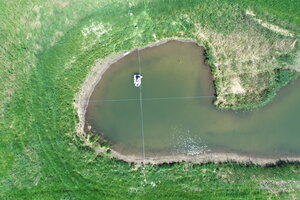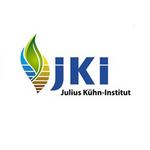Rewetting of agricultural water bodies as an emergency climate protection measure (WAKS)
Scientific evaluation and impact assessment for the agricultural landscape

Objective
With changing dry-wet cycles in small water bodies in agricultural landscapes, there is an increased release of CO2 from drying water body sediments. Removal of pond sediments can contribute to the reduction of CO2 emissions from water bodies by prolonging the periods with water, increasing the water surface areas and reducing the water body sediment as a source of CO2. The project investigates the effectiveness of the rewetting of small water bodies through sediment removal as a measure to reduce CO2 emissions. The results will be used to develop recommendations for agricultural practice.
Methodology
- In situ measurement of CO2 emissions in rewetted water bodies and reference water bodies and during different hydrological seasons (infrared gas analysis)
- Identification of areas with increased CO2 release ("hot spots") and recording of corresponding dynamics ("hot moments")
- Comparison of the dynamic development of CO2 emissions of the rewetted and reference water bodies in the seasonal course
Climate effect under consideration
Reduction of CO2 emissions from water sediments by avoiding repeated dry-wet-circles of small standing water bodies in the agricultural landscape
Contact persons
JKI, Institute for Ecological Chemistry, Plant Analysis and Stored Product Protection
Link to project page: WAKS




